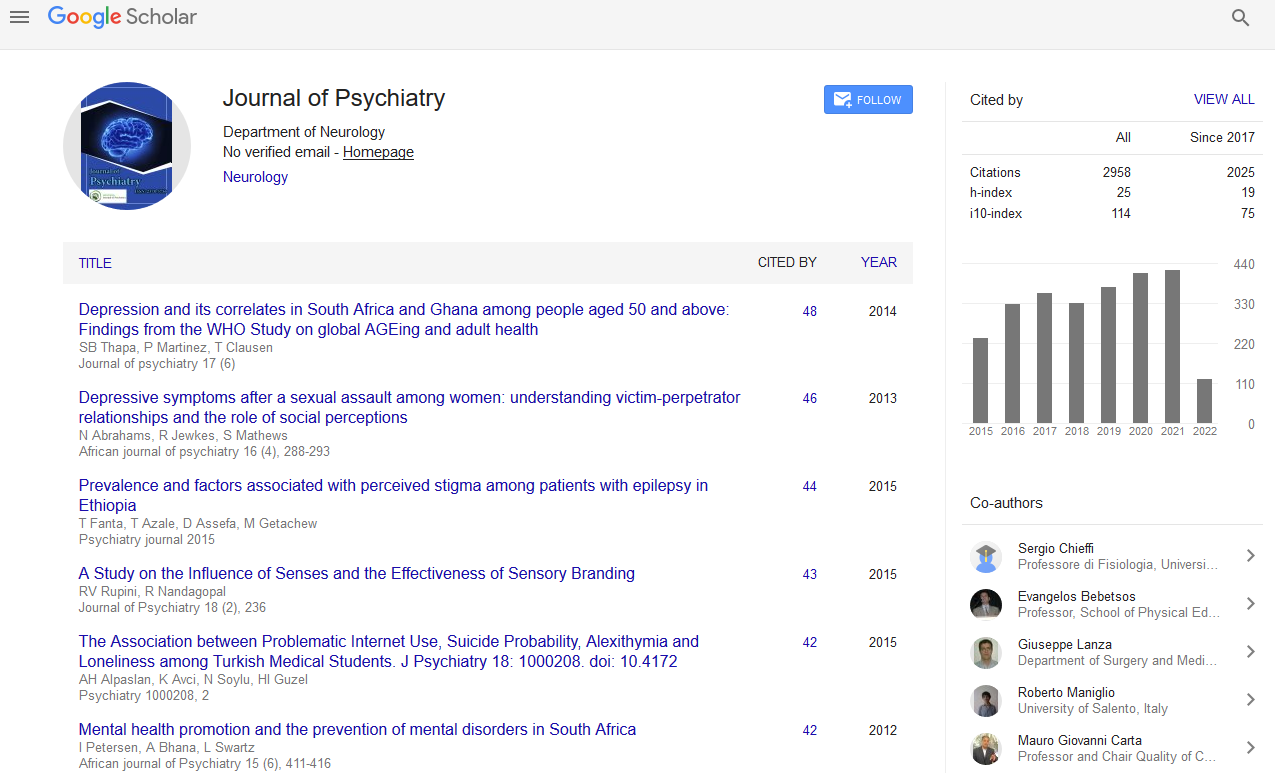PMC/PubMed Indexed Articles
Indexed In
- RefSeek
- Hamdard University
- EBSCO A-Z
- OCLC- WorldCat
- SWB online catalog
- Publons
- International committee of medical journals editors (ICMJE)
- Geneva Foundation for Medical Education and Research
Useful Links
Share This Page
Open Access Journals
- Agri and Aquaculture
- Biochemistry
- Bioinformatics & Systems Biology
- Business & Management
- Chemistry
- Clinical Sciences
- Engineering
- Food & Nutrition
- General Science
- Genetics & Molecular Biology
- Immunology & Microbiology
- Medical Sciences
- Neuroscience & Psychology
- Nursing & Health Care
- Pharmaceutical Sciences
Attention, time and numerosity in children and adolescents with ADHD
Joint Event on World Congress on Psychiatry & Psychological Syndromes & 29th International Conference on Adolescent Medicine and Child Psychology
December 06-07, 2018 | Rome, Italy
M Bartoli, G Anobile, A Tacchi, C Pfanner, G Masi, G Cioni and F Tinelli
IRCCS Stella Maris Foundation, Italy
University of Pisa, Italy
Posters & Accepted Abstracts: J Psychiatry
Abstract:
Introduction: Time, space, math and numerosity are ubiquitous dimensions of human lives. An influential theory suggested that all these magnitudes may be encoded by a common neural mechanism, mainly located in the parietal cortex. Another function processed in the parietal cortex is attention. In fact, as reported by Atkinson, dorsal stream is also important for attention. Additional evidences can be found in studies of atypical populations; however, we have not firm conclusion. In this line, the aim of this study is to test the association of parietal functions in children and adolescents with ADHD. Patients & Methods: Twenty two ADHD and 22 typical children and adolescents, matched for age (8-14 years old) participated in this study. Inclusion criteria were a diagnosis of ADHD according to DSM???V criteria (America Psychiatric Association, 2003), an IQ more than 70, no neurological or sensory impairment and no pharmacological treatment. We used a psychophysical battery of tests to assess numerosity, time discrimination thresholds and visuospatial sustained attention (MOT). Time was measured in the auditory domain and for both sub (T 500 ms) and supra (T 1500 ms) second duration intervals. We also measured symbolic math. Results: ADHD subjects performed worse than controls both in time and number discrimination and symbolic math, but the difference was statistical significant only for T 500 ms (t=2.949, p=0.005, Cohen???s d=0.889). T 500 ms deficit does not depend on IQ and index of elaboration velocity. Instead we found no difference in MOT performance. Interestingly, numerosity and time performance were positively correlated. Conclusions: Our results generally confirm ATOM theory but also show that selective impairments are possible. ADHD subjects seem to show a dorsal vulnerability. Moreover given that time perception deficits do not depend on attention, our results suggest that ADHD may be characterized by a specific time encoding deficit, together with impaired attention skills.
Biography :
M Bartoli has completed DSM-5 Task Force on year 2013 from American Psychiatric Association. She is a member of IRCCS Stella Maris Foundation , Scientific Institute of Child Neurology and Psychiatry, viale del Tirreno 331, 56018 Calambrone-Pisa, Italy.
E-mail: mariaelisa.bartoli@gmail.com


